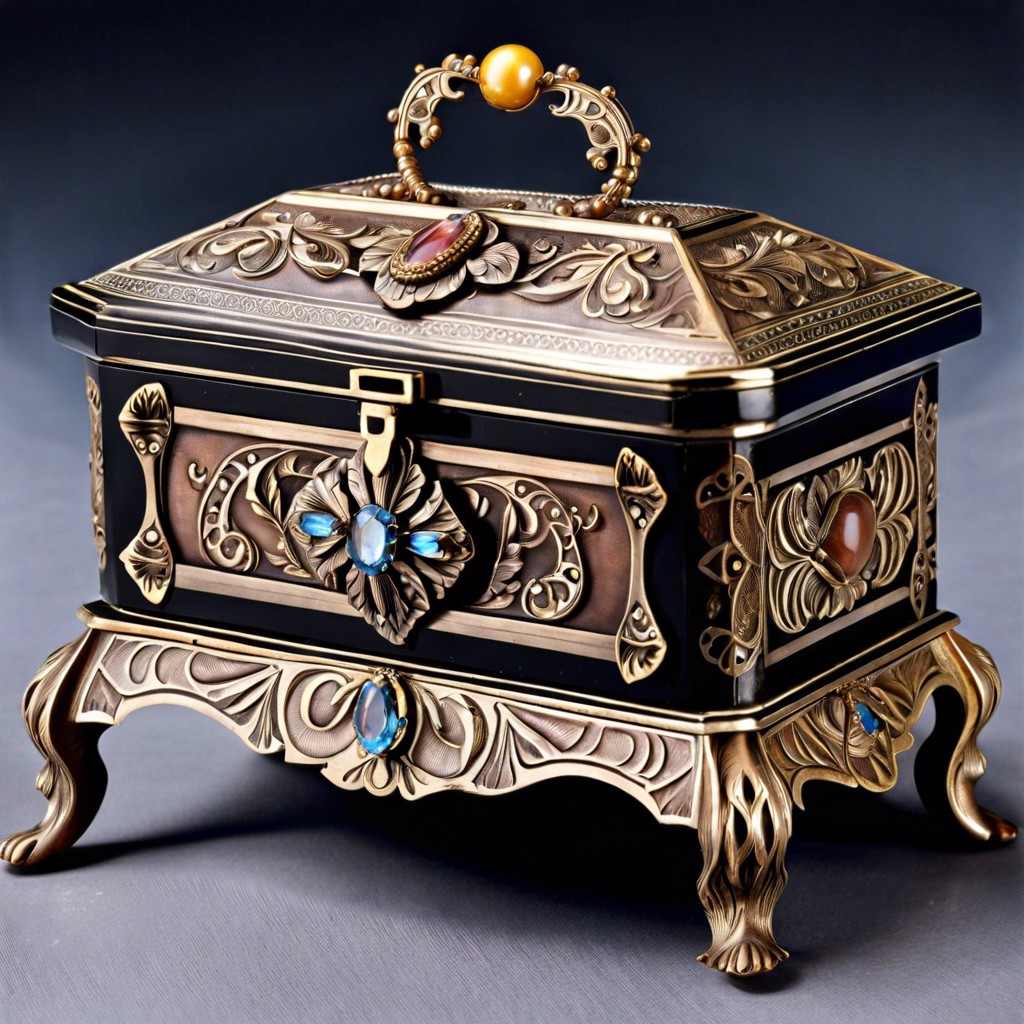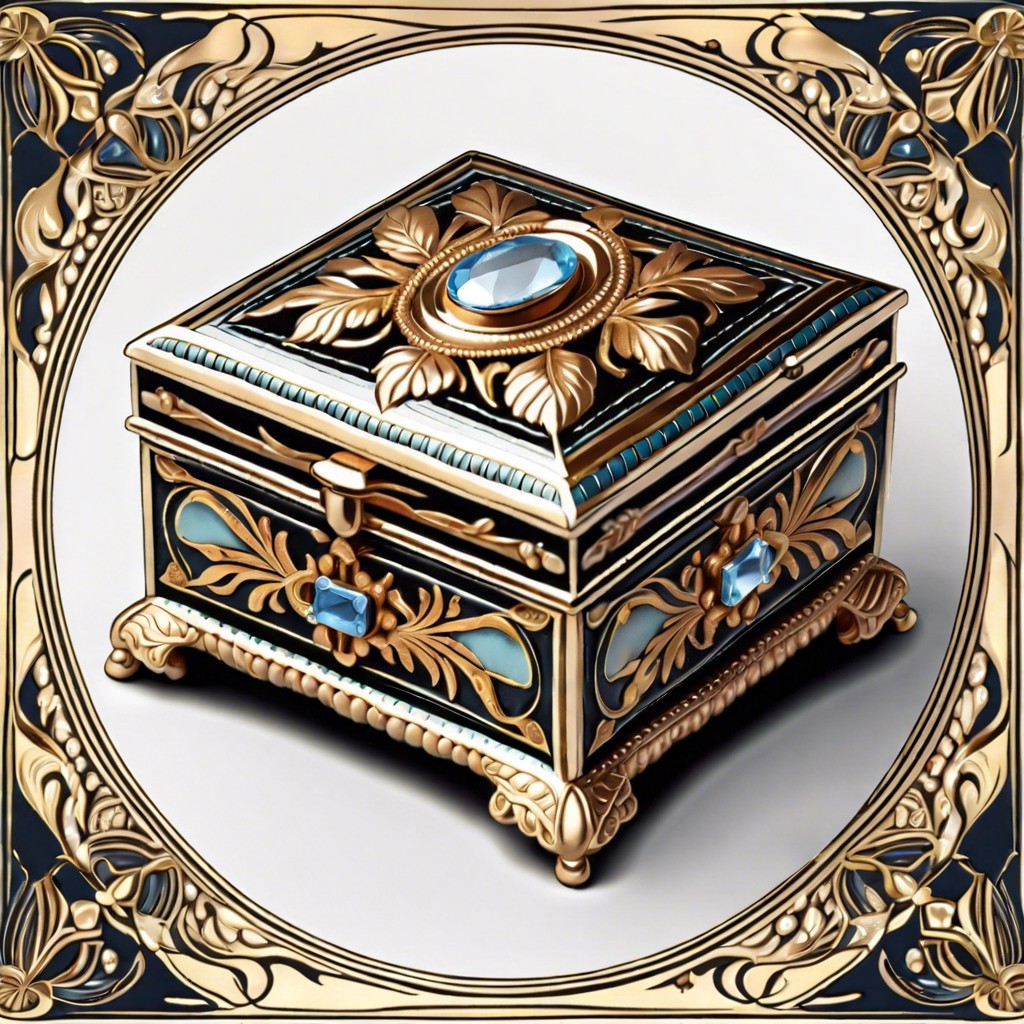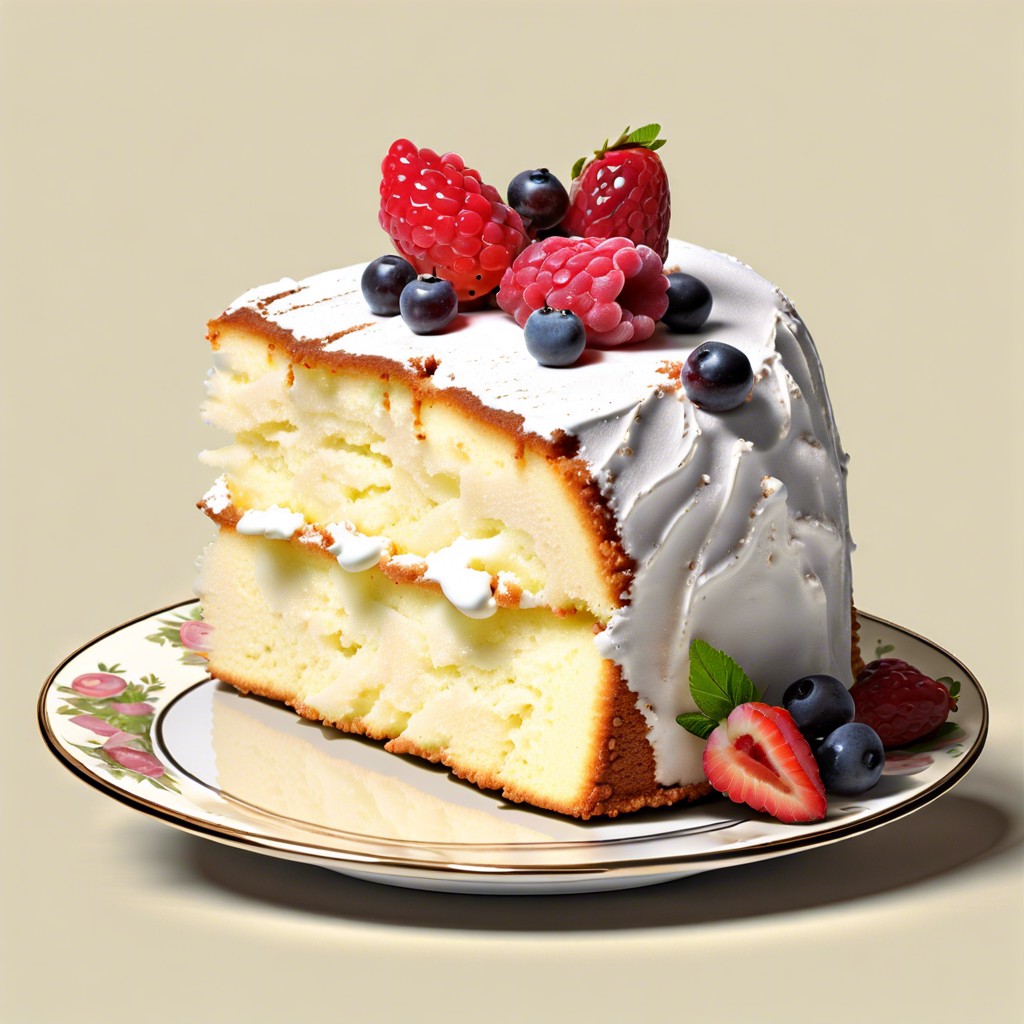Last updated on
Discover how vintage jewelry boxes can elevate your décor while safeguarding your treasured pieces.
Key takeaways:
- Vintage jewelry boxes have a rich history and reflect various artistic and cultural eras.
- Different styles emerged throughout history, including Victorian, Art Nouveau, Art Deco, and mid-century modern.
- Authenticity and value can be determined through careful observation of materials, construction, and marks.
- Proper maintenance involves dusting, gentle cleaning, avoiding direct sunlight, and occasional oiling or polishing.
- Vintage jewelry boxes can be purchased from local antique shops, online platforms, and auctions, but consider condition, authenticity, maintenance needs, and budget.
Historical Context of Vintage Jewelry Boxes

Jewelry boxes have been cherished storage solutions for centuries, evolving with fashion and function. Originating in ancient civilizations, they were initially crafted from precious materials to denote wealth and status. During the Renaissance, artisans in Europe began decorating boxes with intricate carvings and fine art, making them as valuable as the jewels they held. As time progressed, the Victorian era saw a rise in mass-produced boxes, but craftsmanship remained a priority, with added features like musical mechanisms and layered compartments. The 20th century introduced a variety of styles, from Art Deco’s sleek lines to mid-century modern’s minimalist designs, reflecting broader artistic and cultural trends.
Distinctive Styles By Era

Victorian jewelry boxes often feature intricate designs with floral motifs and are primarily crafted from wood or metal. The romantic aesthetics of the era are captured with velvet linings and ornate clasps.
Art Nouveau styles, popular from the late 1800s to the early 1900s, showcase organic, flowing lines and frequently incorporate elements of nature into their design. Materials such as glass and polished stones are common, adding a touch of elegance.
Art Deco boxes from the 1920s and 1930s boast geometric shapes and clean lines, reflecting the modernist influence of the time. These often use a combination of lacquered wood, chrome, and mirrors, making them stand out in terms of brightness and simplicity.
Post-War and mid-century styles lean towards minimalism with a focus on functionality. Materials like teak and maple, known for their durability, were preferred during this era, reflecting the practical mindset of the time.
Understanding these stylings helps in identifying the period a particular jewelry box originates from and appreciates the craftsmanship and historical context it represents.
Recognizing Authenticity and Value
Determining the authenticity of a vintage jewelry box involves keen observation and a bit of knowledge about the materials and craftsmanship of the period from which it originates. Start by examining the materials used; older boxes often feature real wood, leather, or even semi-precious stone inlays. Signs of wear like minor scuffs or patina can also indicate age but should not detract from the overall integrity of the piece.
Inspect the construction details. Joint work, hinges, and the style of ornamentation can tell you much about the time period and authenticity. For instance, dovetail joints are a sign of pre-industrial craftsmanship. In addition, manufacturers from specific eras often used characteristic designs or markings, which can often be traced back through collectors’ guides or historical databases.
The box’s value hinges not just on age but on rarity and condition. A well-preserved piece with a verifiable history or one from a renowned maker or high-demand period can fetch a higher price. Consult with an experienced appraiser for an accurate evaluation, as they can provide insights into both the historical context and the current market value.
Lastly, always cross-reference any information you find with multiple sources. Be wary of reproductions which are prevalent in the market. High-quality fakes can mimic antique traits quite convincingly, so where possible, consult with experts or utilize professional authentication services.
Maintenance and Care Tips for Preservation
Regular dusting prevents grime buildup that can mar the beauty of vintage jewelry boxes. Use a soft, dry cloth to wipe them down gently.
Avoid using harsh chemical cleaners; instead, opt for mild soap and water. Test any cleaner on a small, inconspicuous area first to ensure it doesn’t damage the finish.
Keep jewelry boxes out of direct sunlight, as prolonged exposure can fade colors and cause wood to warp.
For boxes with velvet linings or silk cushions, vacuum with an upholstery attachment on low suction to remove dust. If these areas become stained, consult a professional before attempting to clean, as moisture can be detrimental.
Wooden boxes may require periodic oiling or waxing to preserve their finish and prevent cracking. Always use products appropriate for antique wood.
Closing and opening the box gently will minimize wear on hinges and clasps, ensuring they function well for years to come.
If the box includes metal embellishments like brass or silver, polishing them occasionally will keep tarnishing at bay and maintain the box’s original luster. Always use polishes designed for fine antiques.
Where to Purchase and What to Consider
Exploring local antique shops offers a hands-on experience to feel the craftsmanship firsthand. For wider selections, online platforms like eBay, Etsy, and specialized antique jewelry websites provide extensive inventories. Auctions, both in-person and online, can also be a goldmine for rare finds.
Prior to purchase, assess the condition carefully. Look for intact hinges, minimal wear, and original finish. Verify the authenticity by consulting experts or checking for maker’s marks. Consider the size and compartments to ensure they meet your storage needs.
Understand the maintenance requirements. Older pieces might require specific care to preserve their integrity and appearance. Finally, set a budget because prices can vary greatly based on age, condition, and rarity.




